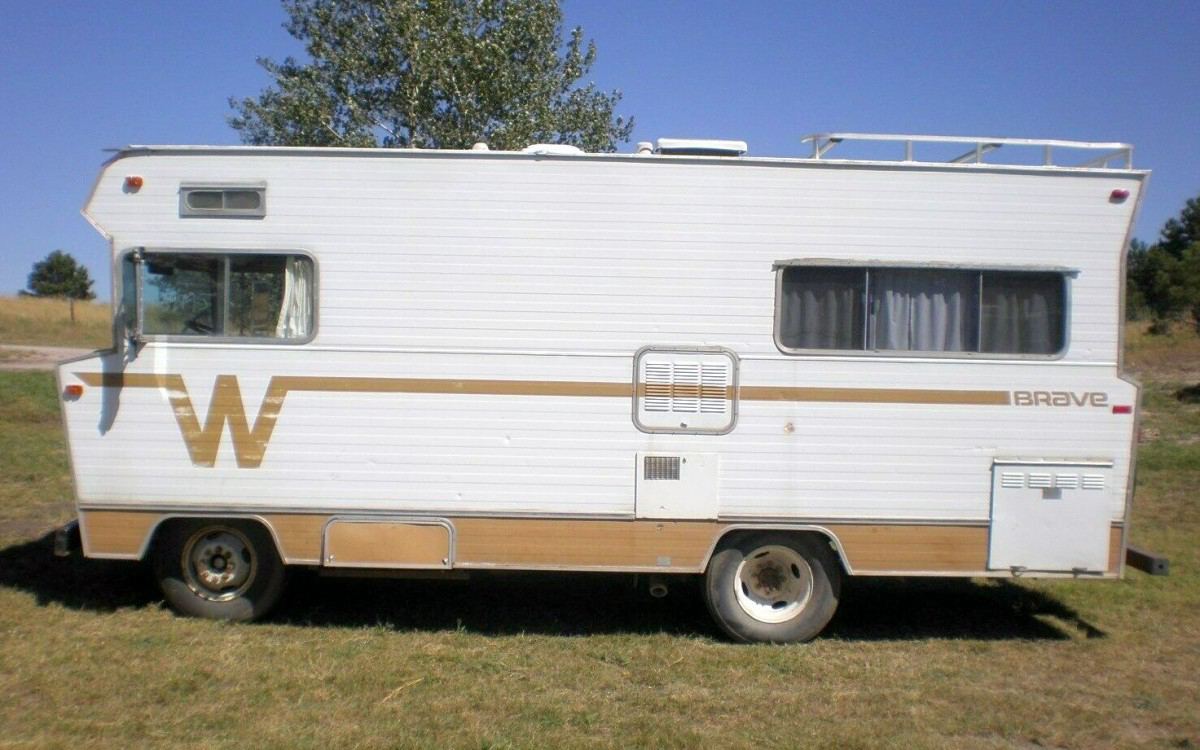
The company has become one of notable leaders in the industry. All products are backed by a financially strong and well-respected company that continues in its role as the industry leader.”ĭespite the economic ups and downs over the last 46 years, since this little Brave hit the road, Winnebago has proven itself to be a survivor in the often challenging recreational motorhome market. Maybe anticipating the economic downtown and looming energy crisis of the mid-1970’s, Winnebago wrapped its 1973 brochure for the Brave model with this note, “Winnebago Is a publicly owned company and in 1970 began trading its stock on the New York Stock Exchange, Pacific and Midwest Stock Exchanges. The copy also states, “This year go 'The Winnebago Route'…in a ’73 Brave!” If you’re two for the road or the small family looking for a first buy, the sprightly Brave will take you into the heart of the great outdoors without leaving those home-like comforts behind…you can choose from three Brave models.” (The Brave D-18 D-20 and D-20T) It’s a ski lodge on wheels, a cottage by the sea, a cabin at the lake.

The Brave will take you wherever you want to go…do whatever you ask.
#1971 WINNEBAGO BRAVE DRIVER#
It continues, “It’s a fun machine for driver and passengers alike. Always a favourite with recreational vehicle buyers, this economical member of the Winnebago tribe has deservedly earned an enviable reputation as a sturdy, compact traveler.” In fact, Winnebago’s brochure in 1973 stated, “For the young at heart from 16 to 60, the ’73 Brave is a good buy for your money. Back in the day, the 1973 Winnebago Brave was positioned as an entry level RV model - designed to appeal to young families or retired couples newly attracted to the RV lifestyle. We found this one parked outside the local Canadian Tire repair shop, all licensed and ready for another summer of camping adventures - its 46th season. It would appear that this 1973 Winnebago Brave is doing exactly that. For a modern touch, engine swaps range from the Cummins diesel to a Turbo LS, but you’d have to travel enough to justify the time and expense.It’s always great to see a vintage motorhome still being used for the owner's vacationing pleasure. I’ve heard RV owners saying their fuel mileage in MPG barely changes when towing a vehicle, “Ten with… 11 without.” If you’re worried about gas mileage, move along now. The trailer hitch suggests a tow-behind vehicle or boat may have further strained the little Brave’s 440 at some point. Speaking of power plants, the venerable Dodge 440 cid (7.2L) V8 promises reasonable thrust to push this brick-shaped object down the road. The dashboard offers plenty of vital information and controls, though the styling comes right from a 1960s industrial power plant. Orange carpet keeps it all “mod” in this ’70s rolling castle. The western blanket probably covers a worn driver’s seat cushion. Be sure to check out the seller’s humorous comments on this topic. The interior looks better than many 20 year-old motor homes I’ve seen. The odometer shows 37,000 miles, not unheard of for a vintage motor home, but in fairness the owner says it could be 137. The front differential dispels any notion that the seller may simply have seen “4×4” on the front hubs of a 2WD chassis and mistakenly boasted of two drive axles.

As we go to press, one brave bidder has pledged $4000 to own this 4×4 adventure cabin on wheels. Described as “great running” and “fun to drive,” this 20-foot Dodge-chassis (D20) RV can be yours for the high bid here on eBay. Wind resistance aside, this 1973 Winnebago D20 “Brave” in American Fork, Utah appears ready for adventure, and it’s the only one of this era I’ve seen with four-wheel drive! That brow jutting out over the windshield may cup the wind, but it also houses the front bunk, a perfect place to stash children or spry adults for the night.

Other than a parachute, few things look as non-aerodynamic as a vintage Winnebago.


 0 kommentar(er)
0 kommentar(er)
